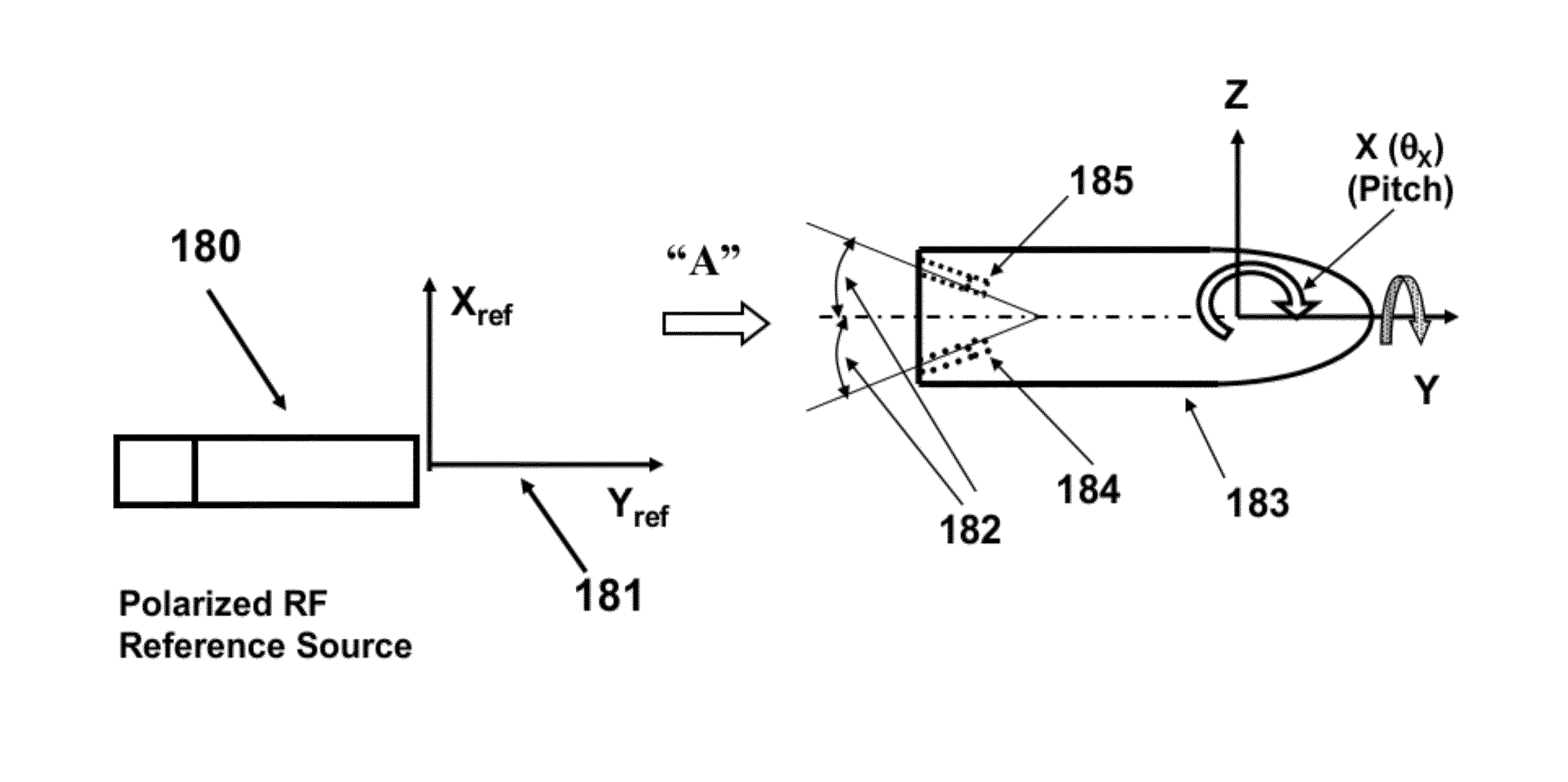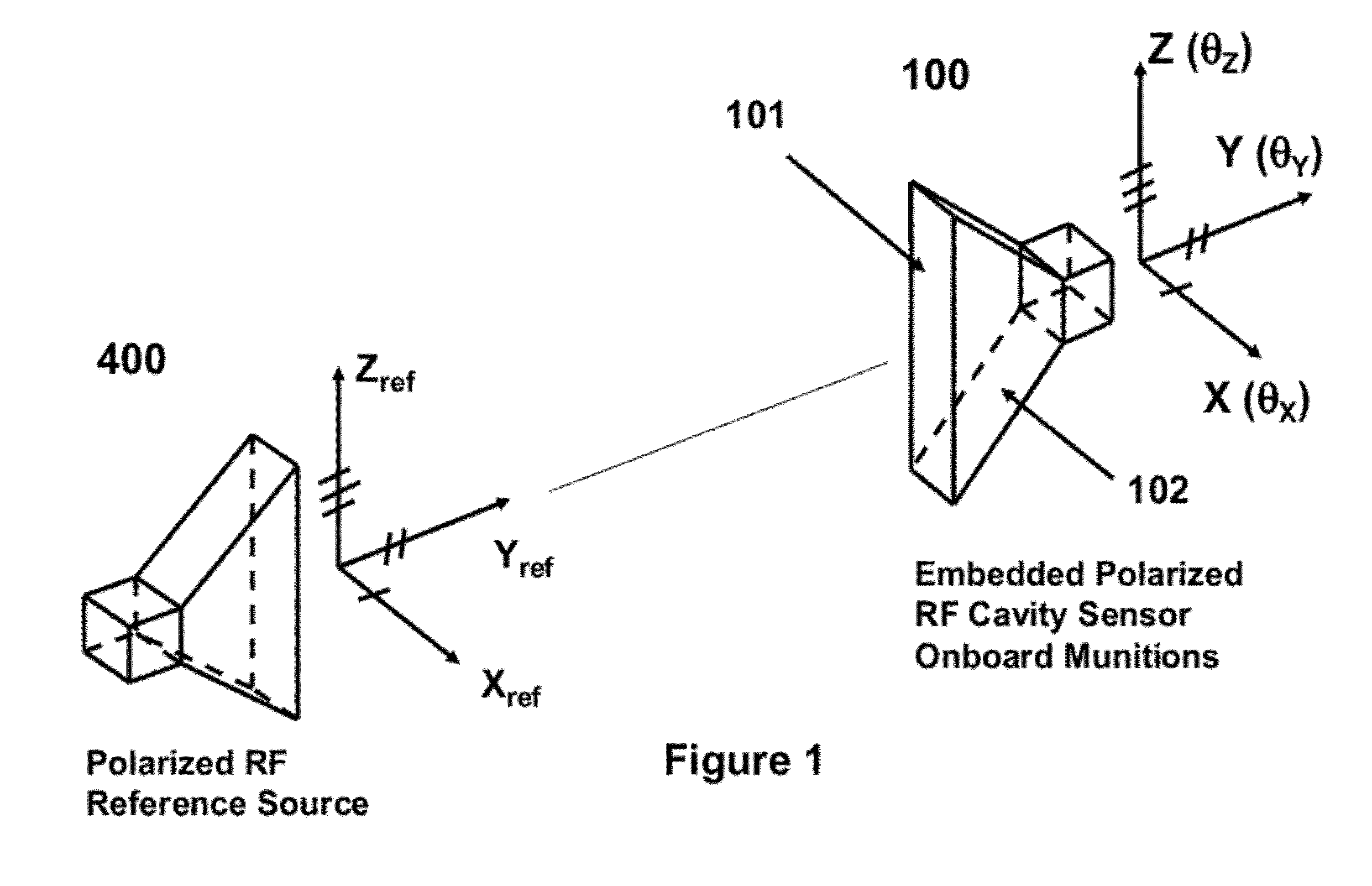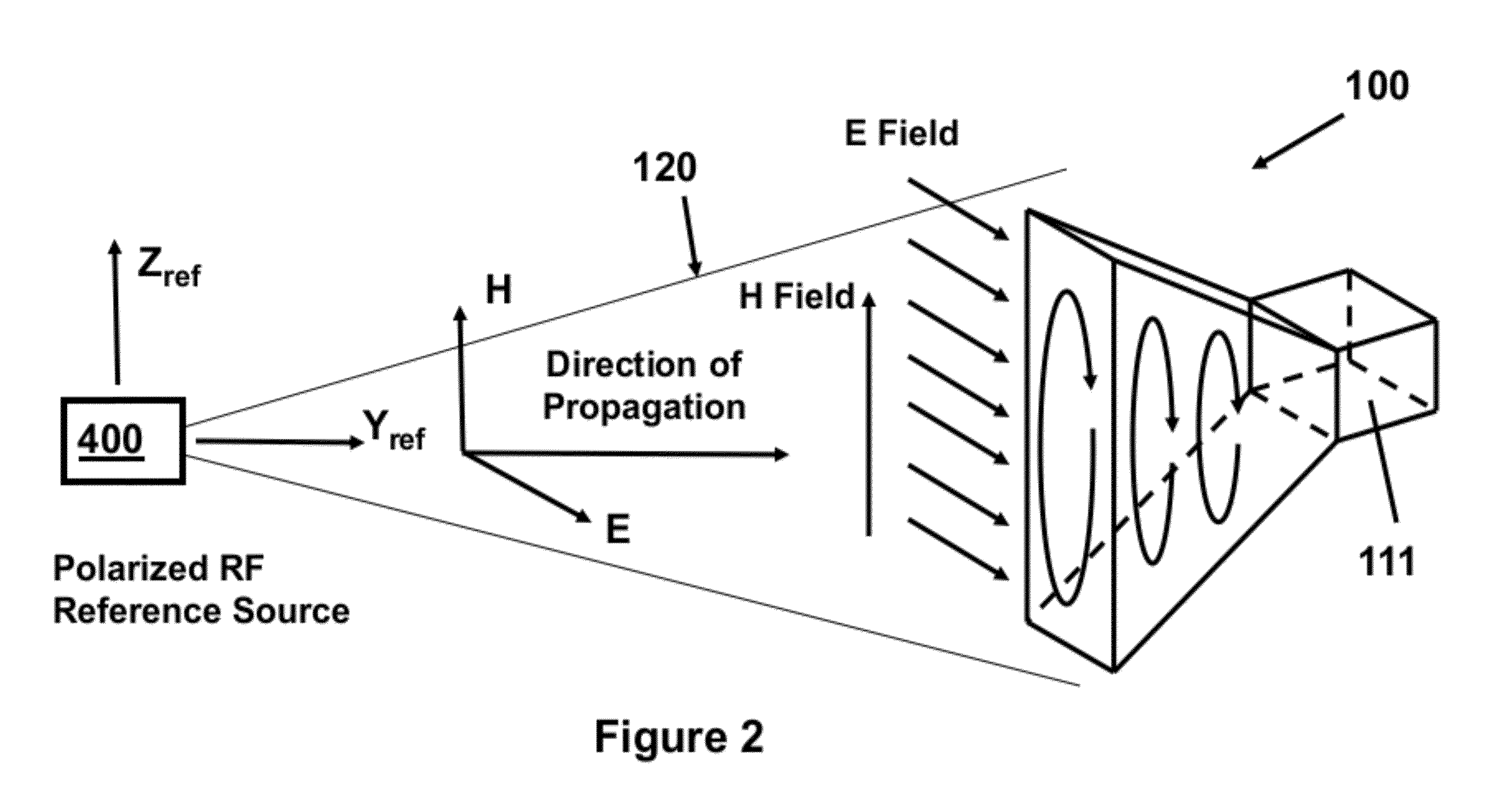System and method for roll angle indication and measurement in flying objects
a technology of flying objects and roll angles, applied in the field of flying object roll angle indication and measurement systems, can solve the problems of limited range of angular orientation measurement, low accuracy of curve fitting, and low power requirement for operation, so as to reduce noise and measurement errors, the effect of more accurate curve fitting and more accurate curve fitting
- Summary
- Abstract
- Description
- Claims
- Application Information
AI Technical Summary
Benefits of technology
Problems solved by technology
Method used
Image
Examples
Embodiment Construction
[0045]Referring now to FIGS. 1 and 2 there is shown a representation of the polarized radio frequency (RF) cavity sensor 100 and its operation with respect to a polarized RF reference (illumination) source (illuminator) 400 affixed to a ground control station or to a (ground or airborne or space) mobile platform.
[0046]An electromagnetic wave 120 consists of orthogonal electric (E) and magnetic (H) fields. The electric field E and the magnetic field H of the illumination beam of the illuminating source 400 are mutually orthogonal to the direction of propagation of the illumination beam. In the case of the polarized RF reference (illumination) source 400, the planes of E and H fields are fixed and stay unchanged in the direction of propagation. Thus, the polarized RF reference source 400 establishes a coordinate reference system with known and fixed orientation and a polarization with a known plane of reference. The polarized RF cavity sensor 100 reacts in a predictable manner to a po...
PUM
 Login to View More
Login to View More Abstract
Description
Claims
Application Information
 Login to View More
Login to View More - R&D
- Intellectual Property
- Life Sciences
- Materials
- Tech Scout
- Unparalleled Data Quality
- Higher Quality Content
- 60% Fewer Hallucinations
Browse by: Latest US Patents, China's latest patents, Technical Efficacy Thesaurus, Application Domain, Technology Topic, Popular Technical Reports.
© 2025 PatSnap. All rights reserved.Legal|Privacy policy|Modern Slavery Act Transparency Statement|Sitemap|About US| Contact US: help@patsnap.com



